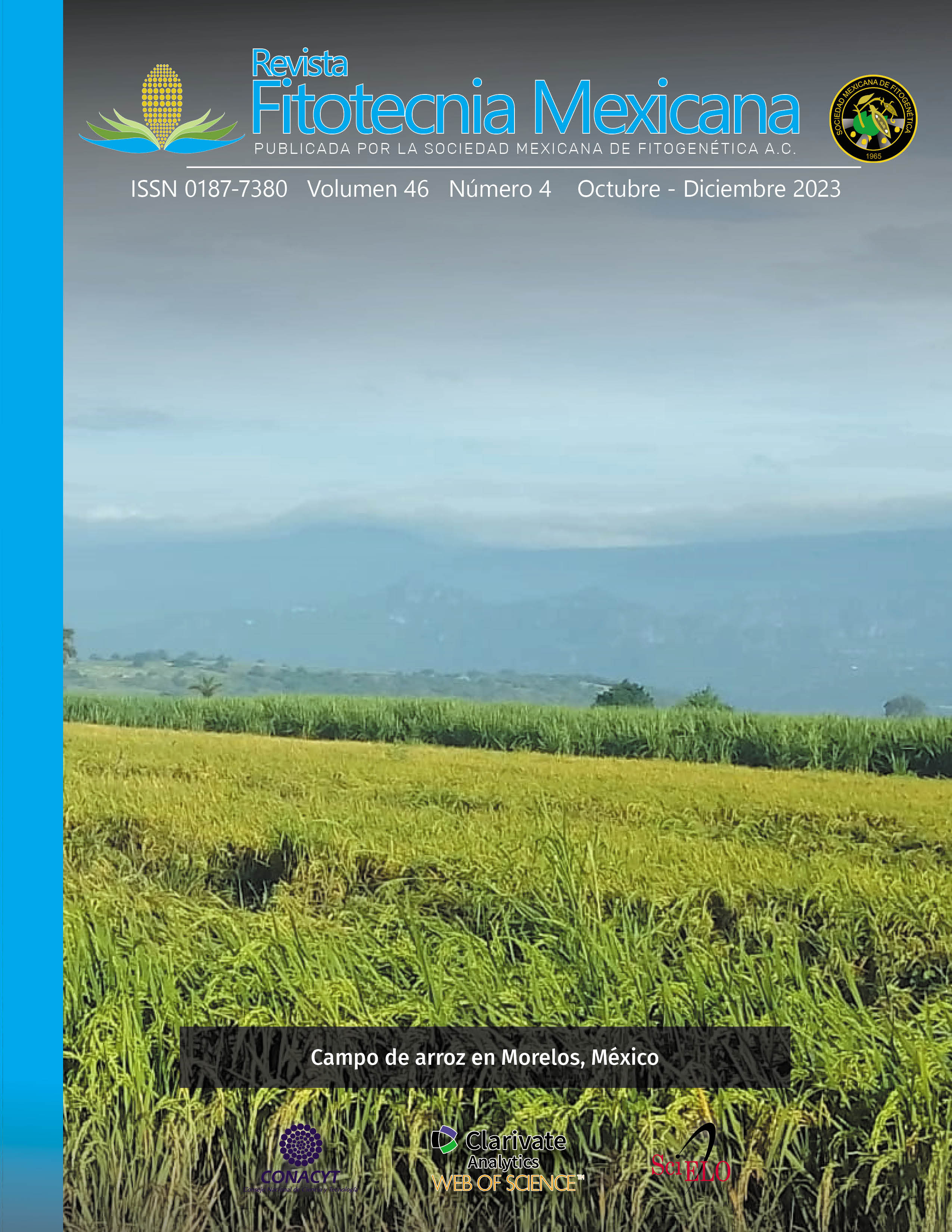BIORREGULADORES Y BIOESTIMULANTES EN EL DESARROLLO, CRECIMIENTO Y RENDIMIENTO DE FRUTO DE ARÁNDANO BILOXI
Contenido principal del artículo
Resumen
En México, el arándano azul cv. Biloxi ha tenido éxito en zonas tropicales y subtropicales por su bajo requerimiento de frío; sin embargo, estas condiciones pueden limitar la iniciación de botones florales de forma organizada, por lo que se debe mejorar y concentrar la brotación de yemas reproductivas para aumentar rendimiento. Se realizó un experimento con la aplicación foliar de biorreguladores y bioestimulantes en plantas de arándano cv. Biloxi en condiciones de invernadero, con el objetivo de evaluar el efecto en la brotación de yemas axilares, crecimiento y rendimiento, en espera de un impacto positivo en dichas variables, ya que estos compuestos modifican o estimulan procesos de desarrollo dentro de la planta. Se aplicaron cinco tratamientos con biorreguladores (tidiazurón, ácido giberélico y ácido glutámico) y bioestimulantes (extracto de alga marina Ascophyllum nodosum). El tratamiento con TDZ (25 mg L-1) + AG3 (12.5 mg L-1) + GLU (75 mg L-1) aumentó un 46 % la brotación de yemas, 28 % el rendimiento de fruto, 13 % el calibre de fruto y 24 % el peso individual del fruto, lo cual mostró el efecto de los reguladores de crecimiento tipo citocinínico y giberélico en el crecimiento celular. Los tratamientos con extractos de alga Ascophyllum nodosum (2 mL L-1) promovieron la elongación de los brotes en las plantas de arándano, así como la emisión de nuevas cañas. Los biorreguladores coadyuvaron a lograr mayor rendimiento, mientras que la aplicación de bioestimulantes no logró aumentar rendimientos; sin embargo, el bioestimulante tuvo efectos positivos en la emisión de cañas, aspecto importante a considerar en los ciclos subsecuentes de producción.

